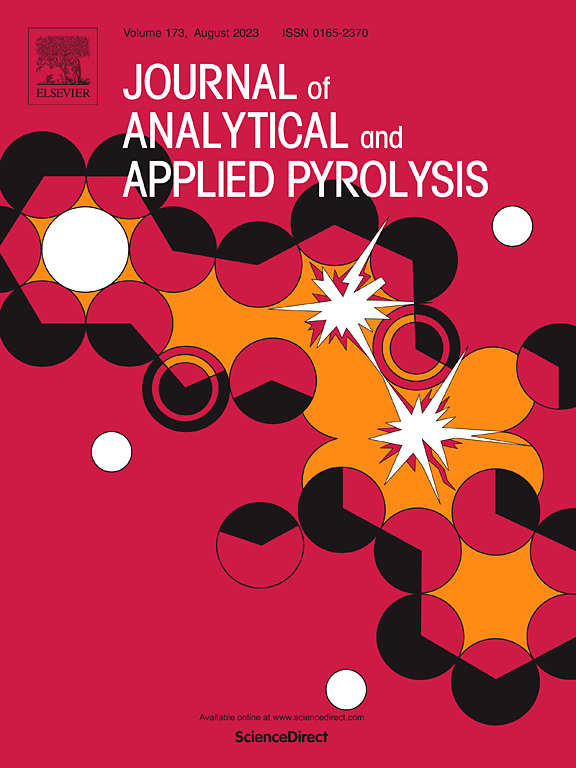低温预碳化制备的生物质颗粒:经烟气处理的生物质特性
IF 5.8
2区 化学
Q1 CHEMISTRY, ANALYTICAL
引用次数: 0
摘要
本文提出了低温预碳化(LTPC),以去除生物质中的含氧官能团,进行后续的球团化。在以玉米秸秆为典型原料的自制回转窑上,深入探讨了气氛(N2、干烟气和湿烟气)和温度(210 ~ 350℃)对LTPC制品性能的影响。结果表明,经传导的LTPC均引起了CS的质量损失,而温度的升高加剧了这一过程。表征表明,这些损失主要是由于纤维素和半纤维素组分的降解,同时导致LTPC CSs的碳含量、固定碳比和热值增加。此外,还对LTPC CSs中的自由基进行了监测,并结合上述表征证实了大气对CS LTPC的作用,其顺序为干烟气> N2 >湿烟气。然后,在综合考虑质量产率、能量产率和较高的LTPC CSs热值(湿烟气270℃)的基础上,引入最佳评价标准来选择LTPC的首选条件。该研究与工业中湿法烟气场景相匹配,为后续颗粒化生物质升级提供了参考。本文章由计算机程序翻译,如有差异,请以英文原文为准。
Biomass pellets prepared via low-temperature precarbonization: Biomass properties with flue gas treatment
In this paper, low-temperature precarbonization (LTPC) was proposed to remove oxygen-containing functional groups within biomass for subsequent pelletization. Influences of atmospheres (N2, dry flue gas, and wet flue gas) and temperatures (210–350 °C) on LTPC product properties were thoroughly explored in a self-made rotary kiln with corn stalk (CS) as the typical feedstock. Results showed that conducted LTPC all caused the mass loss in CS, and increased temperatures reinforced this process. Characterizations revealed that these losses were mainly attributed to the degradation of cellulose and hemicellulose components, which simultaneously resulted in the enhancement of carbon content, fixed carbon proportion, and heating value of LTPC CSs. In addition, radicals in LTPC CSs were also monitored and together with the above characterizations confirmed the role of atmosphere on CS LTPC, with the order of dry flue gas > N2 > wet flue gas. Optimal evaluation criteria were then introduced to select the preferred LTPC condition based on the overall consideration of mass yield, energy yield, and higher heating values of LTPC CSs, which was 270 °C in wet flue gas. This work matched well with the wet flue gas scenario in industry and provided a reference for biomass upgrading for subsequent pelletization.
求助全文
通过发布文献求助,成功后即可免费获取论文全文。
去求助
来源期刊
CiteScore
9.10
自引率
11.70%
发文量
340
审稿时长
44 days
期刊介绍:
The Journal of Analytical and Applied Pyrolysis (JAAP) is devoted to the publication of papers dealing with innovative applications of pyrolysis processes, the characterization of products related to pyrolysis reactions, and investigations of reaction mechanism. To be considered by JAAP, a manuscript should present significant progress in these topics. The novelty must be satisfactorily argued in the cover letter. A manuscript with a cover letter to the editor not addressing the novelty is likely to be rejected without review.

 求助内容:
求助内容: 应助结果提醒方式:
应助结果提醒方式:


